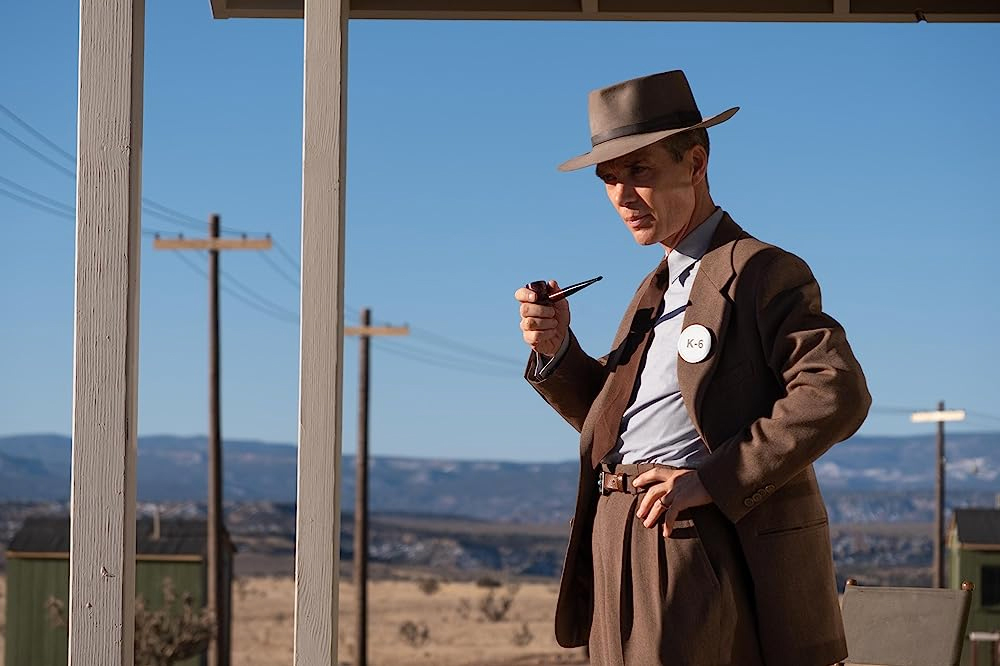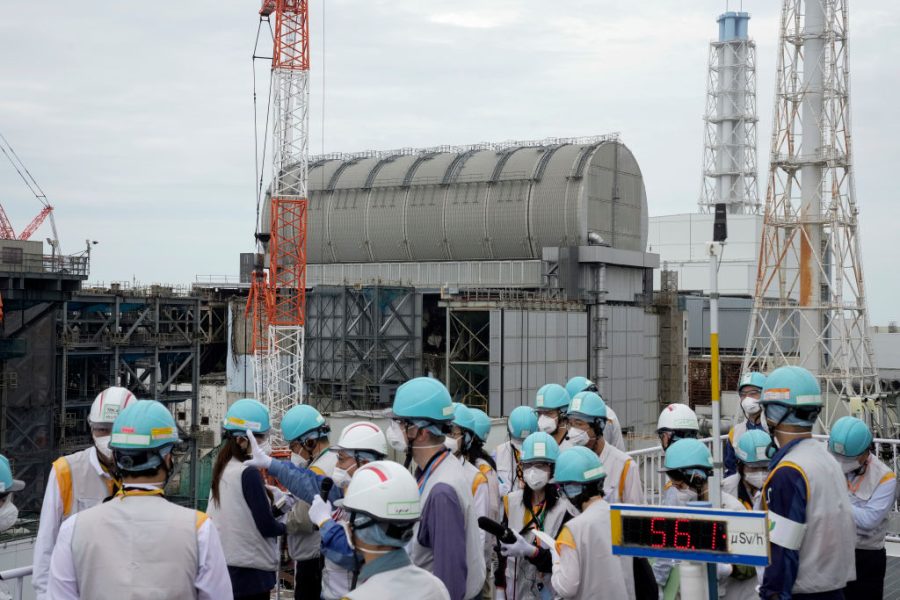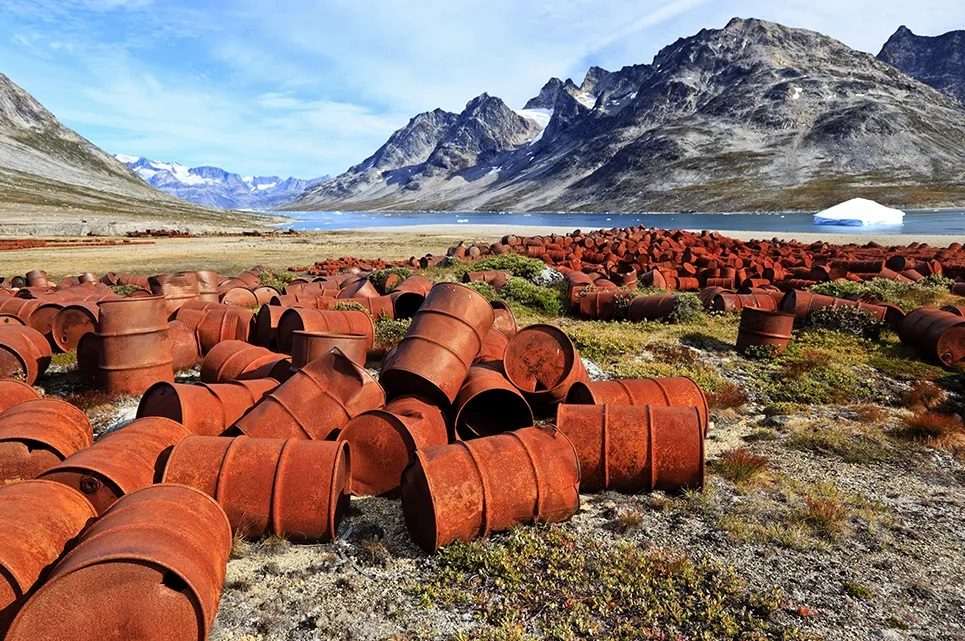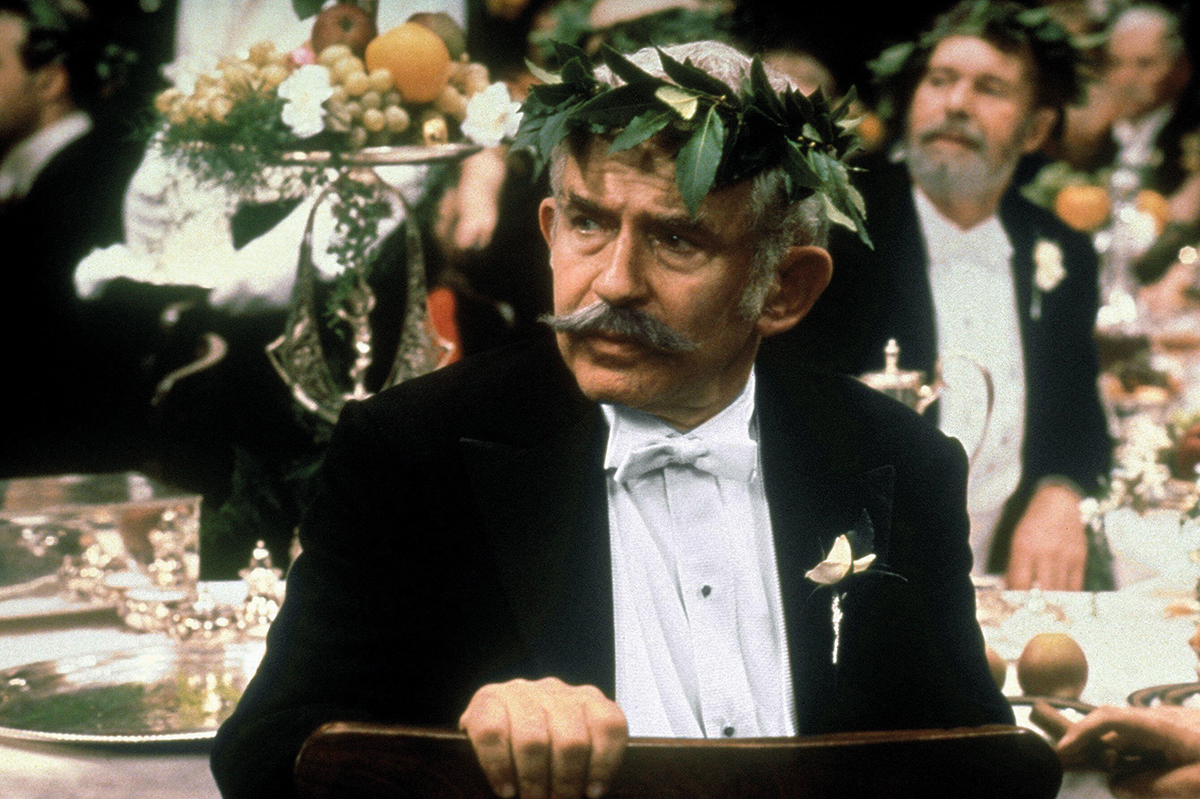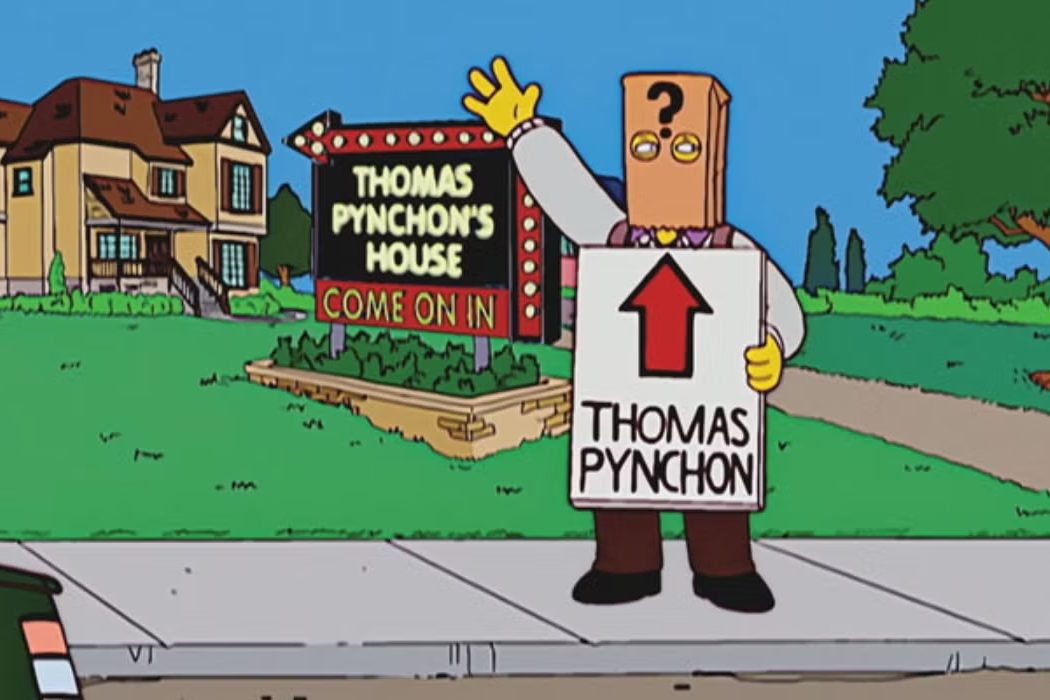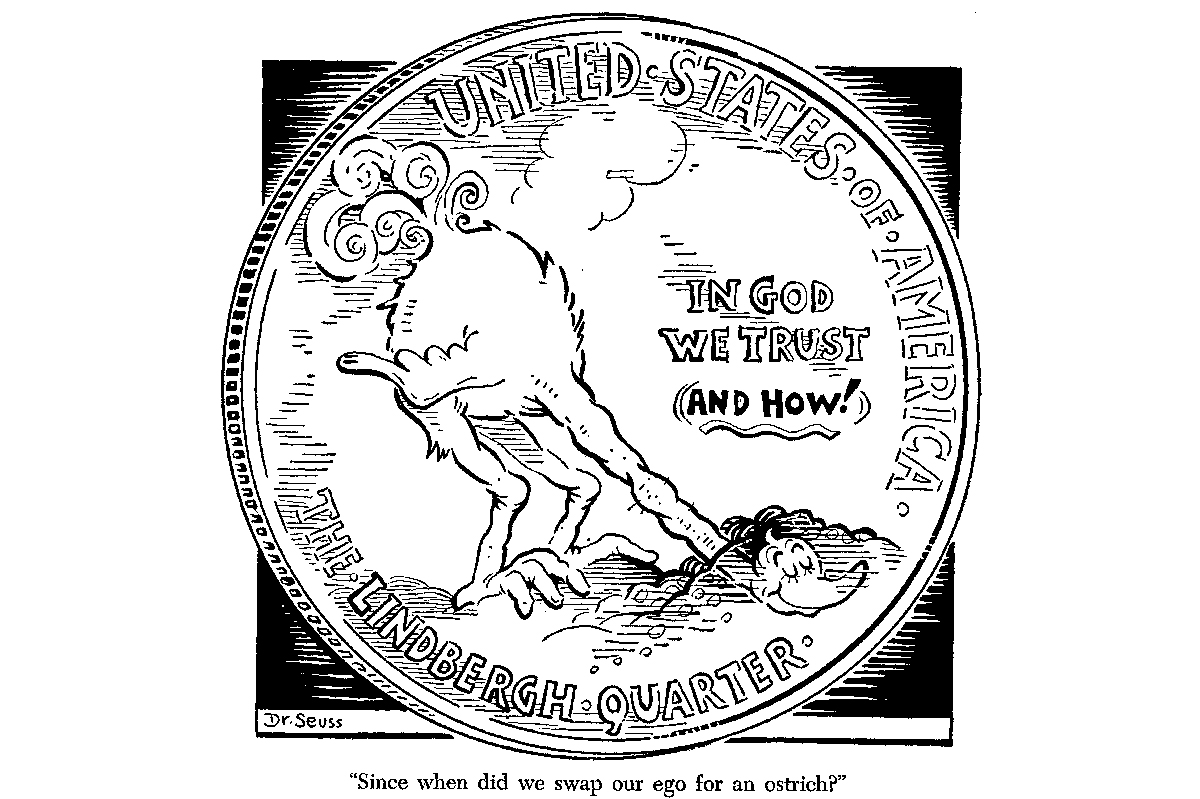Ripples appear in courtyard puddle outside the Cavendish Laboratory at the University of Cambridge; a tornadic funnel erupts from the black atmosphere toward Earth. Between these images — the small one of intimate life and the colossal one of planetary death — a haunted young man looks on in curiosity and horror.
The man is Robert Oppenheimer, played to perfection by Cillian Murphy, a theoretical physicist “troubled by visions of a hidden universe.” This visionary, capable of conjuring apocalypse from the particles stowed inside atoms, spends the first fifteen minutes of the film looking bewildered — a gaunt, gray sliver of a man wandering through his life like a ghost. His first act is to inject an apple with potassium cyanide and leave it on the desk of his physics professor, Patrick Blackett. He retrieves it before anyone can taste the poison fruit, but he’s soon ousted from this academic Eden and sent to study physics at the University of Göttingen.
En route, he forms a friendship with a fellow passenger from the United States, physicist Isidor Isaac Rabi. When the two young Americans meet Werner Heisenberg at Göttingen, the German physicist refers to Oppenheimer and Rabi as “cowboys.” Rabi laughs this off, but Oppenheimer seems to derive an element of inspiration from Heisenberg’s joke — he’d learned to ride horses on a New Mexico ranch years before.
And so, Oppenheimer goes West. At Berkeley, he begins teaching physics and for the first time in the film, Oppie (as he’s called by his students) is animated and we witness strange charisma and powerful energy stored inside him. Attendance in his course swells from just one pupil, to several, and soon a room of brilliant, bustling young people are orbiting his nucleus. His off-campus hours are spent socializing at Communist Party meetings; he has love affairs, and meets the woman he’ll marry, Katherine “Kitty” Puening — played with gravity and restraint by the always-excellent Emily Blunt.
Nothing appears accidentally in a Christopher Nolan film — not a single pixel. If a prop or a set dressing is projected onto that massive screen up there in 70mm IMAX, it’s because Nolan agonized over it. He seats Oppenheimer and Kitty on horseback three different times in the film, and we watch as they go galloping across the desert like the communist desperadoes that they are.
Nolan introduces these elements of the Western and then bombards them with elements of the thriller, the biopic, the psychological horror film, courtroom drama, producing a strange fusion of genre and releasing terrific dramatic energy.
In the film, Einstein reminds Oppie that, like himself, Oppenheimer has no particular genius for mathematics. Niels Bohr tell the protagonist to get out of the laboratory. An attentive audience understands that Oppenheimer’s true genius lies in neither mathematics nor physics, but in organizing a posse. When war breaks out and Oppenheimer is chosen to lead the Manhattan Project, he assembles a gang of the greatest scientific minds the United States can get its hands on. He selects the location for the laboratory and test site at Los Alamos, New Mexico, then orders the construction of a town that looks like the set of an old Hollywood western.
Once Kitty joins him and he drives her up the dusty thoroughfare through the middle of Los Alamos, she stares at the makeshift buildings with the cold eye of a gunslinger.
“All it needs is a saloon,” she says.
Word arrives that the Germans are attempting to build an atomic bomb of their own and a showdown begins. The entire world is watching to see who’s the fastest draw. In this middle section of Nolan’s film, Oppenheimer’s torment seems to vanish: he’s made for this. There’s a key moment where he finally dons his trademark hat — neither white nor black, of course, but gray. Oppenheimer squares his fedora and then goes walking down the dirt street of Los Alamos like Gary Cooper in High Noon.
Nolan wasn’t the only master storyteller thinking about Oppenheimer and his Bomb over the past few years. In the first volume of Cormac McCarthy’s farewell novels, The Passenger, the protagonist’s father, a scientist who worked on the Manhattan Project, says the following about Robert Oppenheimer:
He would answer your questions before you asked them. You could take a problem you’d been working on for weeks and he would sit there puffing on his pipe while you put your work up on the board and he’d look at it for a minute and say: yes. I think I see how we can do this. And get up and erase your work and put up the right equations and sit down and smile at you.
The novel represents a departure from the Westerns that made Cormac famous, but not a departure from Cormac’s life. His own father had moved the McCarthy family to Knoxville in 1937 when Cormac was four years old to work as an attorney for the Tennessee Valley Authority — the federally-funded electric company whose dams and hydropower led the US Army to build the top-secret uranium-enrichment facilities at Oak Ridge in 1942 that would power Oppenheimer’s bomb, twenty miles from the home where Cormac grew up.
What effect his father’s association with the Manhattan Project — however slight — had on Cormac’s life is unknown, but it has wrecked those of Bobby and Alicia Western, the brother and sister protagonists of his novel. The latter dies by suicide in the opening pages of the book and the former supports himself as a salvage diver, retrieving wreckage from the ocean floor, sifting through the rubble of his past. Bobby’s friend, John Sheddan, has this to say about the benighted Western family:
His father’s trade was the design and fabrication of enormous bombs for the purpose of incinerating whole citiesful of innocent people as they slept in their beds. Cleverly conceived and handcrafted things. One off, each of them. Like vintage Bentleys.
Those last three sentences could describe both bombs and the Western siblings. Sheddan goes on to inform a friend of his, Bianca, how Bobby is trained in physics, Alicia in mathematics — both brilliant, but the sister suicidally so.
The last step of Cormac’s process with these twin novels, decades in the making, was an act of fission. Deciding he wasn’t writing one large novel, but two lighter elements, Cormac split that larger nucleus in two. His Westerns are not only divided into brother and sister, but into separate volumes.
Cormac’s final works of fiction are fundamentally about the generational effects of the Bomb and the way a father’s obsession can fissure his children’s lives.
The character Sheddan articulates the tragedy of Bobby Western’s life in this short exchange of dialogue:
“[Western] is very nice, [said Sheddan]. I’m very fond of him.
But he’s in love with his sister.
Yes. He’s in love with his sister. But of course it gets worse.
Bianca smiled her odd smile and licked her upper lip. Okay. He’s in love with his sister and…?
He’s in love with his sister and she’s dead.”
Oppenheimer has two distinct strands, captioned “Fission” and “Fusion” in the opening minutes. The first is in color; the second, black and white. Rather than dividing the three-hour film in half at the ninety-minute mark, Nolan braids the strands together: a sequence in color will be followed by one in black and white. In interviews, the director has stated that the black and white sections represent a more objective, historical narrative, while the other depicts the story colored by Oppenheimer’s perspective.
Nolan understands the importance of staging the most important explosion in human history — one that would lead to the devastation of Hiroshima and Nagasaki months later — and we are given the detonation of the first atom bomb in vibrant color. The build-up is worthy of Hitchcock’s greatest scenes of tension and terror. By the time the big red button is pressed, you may realize you’ve been holding your breath.
What Nolan puts on the screen at this climactic moment is best described by Cormac, writing about the same world-altering minutes in The Passenger:
Oppenheimer at Trinity. Teller. Bethe. Lawrence. Feynman. Teller was passing around suntan lotion. They stood in goggles and gloves. Like welders. Oppenheimer was a chain smoker with a chronic cough and bad teeth. His eyes were a striking blue. He had an accent of some kind. Almost Irish. He wore good clothes but they hung on him. He weighed nothing. Groves had hired him because he had seen that he could not be intimidated. That was all. A lot of very smart people thought he was possibly the smartest man God ever made. Odd chap, that God.
Nolan had his film scored by Ludwig Göransson who provides a soundtrack made up of haunting melodies and unsettling ambience, but the moment the bomb goes off, the soundtrack disintegrates. We watch with Oppenheimer and his men from the bunker, miles away from the blast, and the loudest noise is Cillian Murphy’s breathing. At first, the explosion is all light and flame. The men squint, even in their welder’s goggles and glasses. The tree of fire keeps swirling up into the dark sky, as if climbing to consume the stars.
When the sound of the blast finally hits the men, the theater rumbles. I could feel the noise in my chest, and though a veteran of rock concerts and shooting ranges, I felt disturbed and excited in equal measure.
Murphy’s Oppenheimer emerges from the bunker into dawn sunlight, instantly old. He is smiling, but he seems to have aged several decades in an instant. Though he descended into the bunker hours before, the world he climbs back into is hardly the same.
There is still an hour of film left, one I won’t spoil for you here. Suffice to say that, as in The Passenger, the final act of Oppenheimer deals with the human consequences of revolutions be they political, sexual or technological.
What can rescue us from personal and professional annihilation? Both Cormac and Nolan would have us understand that a true Western hero can only be saved by his loyal partner.
Oppenheimer and Bobby Western are cowboys, but Kitty and Alicia are the gunfighters.



